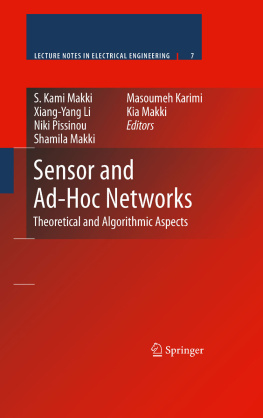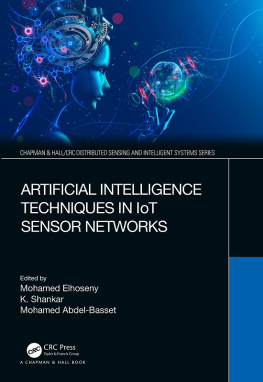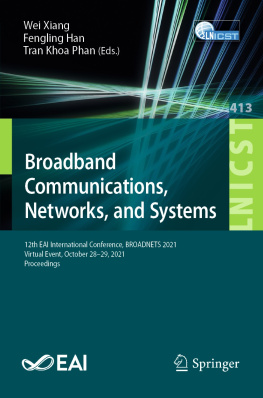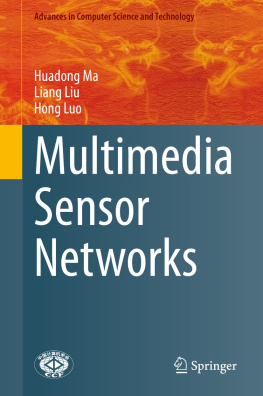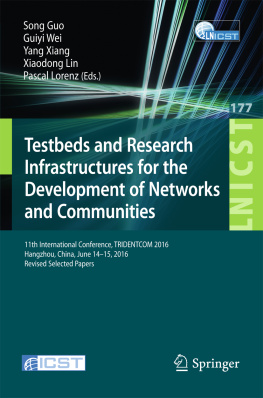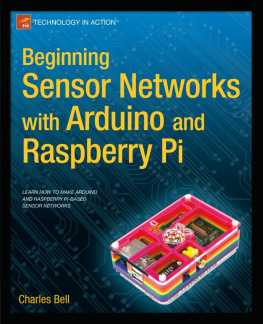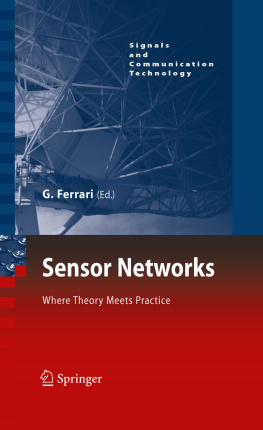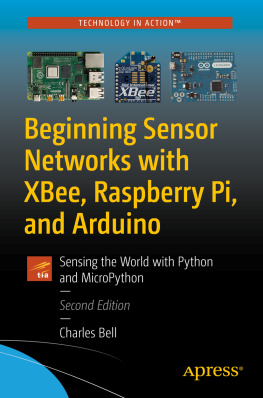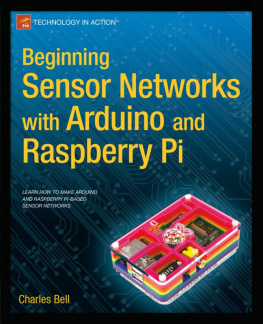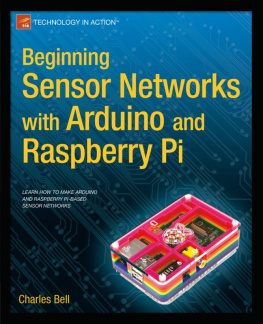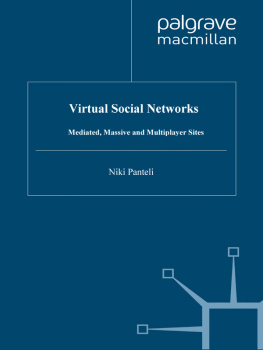1.1 Introduction
The rapid advances in mobile and wireless technology and the growing popularity of smart devices facilitate access to a variety of sources of information without the constraints of location and time. However, this availability of information does not provide the assurance of advancement in all areas of mobile and wireless technology as there are still many uncharted research areas. Many unanswered questions exist that require dedicated investigation by the enthusiastic researchers in this field. The workshop on Theoretical and Algorithmic Aspects of Sensor and Ad Hoc Networks held on June 2829, 2007 in Miami, Florida, aimed to closely examine some of these research areas and investigate the opportunities for other uncharted research areas. To achieve these objectives, the technical program chairs and committee members meticulously selected the best and the most relevant submitted research papers for inclusion into the workshop program. These research papers covered different aspects of the sensor and ad hoc networks such as topology control, coverage and connectivity, scalability, routing, and security. These papers were presented by their respective participants. These presentations provided a platform for further discussions by the participants on various research directions and obstacles in this area. Not all participants agreed fully on whether a particular direction has been fully investigated. However, the discussions helped to clarify some of the underlying issues. This report intends to serve as a guidance for research in the area of theoretical and algorithmic aspects of mobile wireless sensor and ad hoc networks.
Ad hoc networks originated early in the 1980s as packet radio networks in which the nodes could move freely while communicating over multihop wireless links. These networks are characterized not only by the nature of the medium, but also by the lack of infrastructure available for centralized computation and the time-varying topology. This unrestricted mobility and ease of deployment make ad hoc networks suitable for a wide range of applications, from military communication to disaster relief to personal-area networking. For example, Bluetooth is an example of a short-range wireless ad hoc network. Because of the wide range of applications for ad hoc networks, there is ongoing research on these types of networks for nearly 25 years. During this period, countless solutions for various problems in these networks have been proposed and innumerable papers have been published. Yet, these networks are not seen in the publicly available commercial domain. One of the main reasons is the lack of commercial usage of these types of networks. It should be mentioned that although these types of networks may not have commercial usages, many of the elaborate methodologies are quite useful in similar networks that seem to have a commercial future, such as wireless Local Area Networks (LANs), mesh, and sensor networks. In a sense, these networks are all descendant of ad hoc networks. For example, wireless sensor networks (SNETs) are composed of a large number of sensor nodes. However, since sensors are tiny and low cost devices, these types of network have stronger constraints such as power restrictions and limited computational capacity. Therefore, current architectures for sensor networks are either application specific or generic. Application-specific SNETs provide limited reusability. They are not cost effective and may require extensive reprogramming efforts to make the network capable of serving qnew applications. The generic SNETs usually require a sizeable code to be deployed on the nodes regardless of the specific requirements of the application at hand. More importantly, the SNETs may not be optimized to fully exploit the specific characteristics and query patterns of a given application. As sensor technologies mature and new applications proliferate, current design models for sensor-actuator systems seem increasingly unable to cope with the requirements of the next generation of open, ubiquitous, interoperable, multipurpose SNETs. Architectures for future sensor systems should serve different applications and adapt to different postdeployment query patterns. Networks from different providers should be individually programmed and also be able to interoperate efficiently. Though, both application-specific and generic architectures are obviously unable to satisfy these requirements, therefore, there is a need for new customizable architectures to enable the next generation of sensor actuator systems. We define customizable SNETs as readily configurable networks, and on deployment, are able to serve different types of applications with arbitrary query patterns. A node in a customizable SNET is an identifiable resource capable of being accessed by any entity, from within or outside the network. Customizable SNETs would provide developers with the flexibility to combine the resources provided by nodes in one or different (existing) SNETs to meet the requirements of new applications and yet expect the same levels of performance that would result from an application-specific deployment.
The next section highlights some of the challenges for sensor and ad hoc networks, such as interoperability, adaptability, scalability, reliability, energy efficiency, security, and establishment of a standard testbed. Section provides concluding remarks for this report.
1.2 Challenges for Sensor and Ad Hoc Networks
1.2.1 Interoperability
Ad hoc and sensor networks are the key components of the vision of pervasive computing. Developing pervasive environments is not possible without enabling interoperability among ad hoc and sensor networks. Given the constraints on resources in these networks (energy, memory, bandwidth, etc.), interoperability middleware developed for traditional networks is clearly not a viable option.
Traditionally, ad hoc networks have been considered as isolated, standalone networks. In recent years, enabling the interoperability among ad hoc networks has been identified as the key requirement in many civilian and military applications. An example of this interoperability occurs in a disaster scenario where several teams of first responders (fire fighters, ambulance teams, police officers, etc.) are quickly deployed to the scene of the disaster and cooperate to save lives and property. Each team of first responders may have its own network of handheld devices. Often, effective disaster management plans require that the teams be able to share information among each other despite the heterogeneous hardware and software profiles of their networks.
Interoperability in the context of ad hoc networks may have two forms: (1) ad hoc interoperability and (2) interoperability through an infrastructure (e.g., the Internet). In the first case, the problem is to enable different ad hoc networks to interact without relying on any infrastructure. In the second case, an infrastructure network is used as a backbone to interconnect several ad hoc networks. Research investigating the second form has been underway for many years []. Solutions providing the first form of interoperability are still the focus of intensive research.

